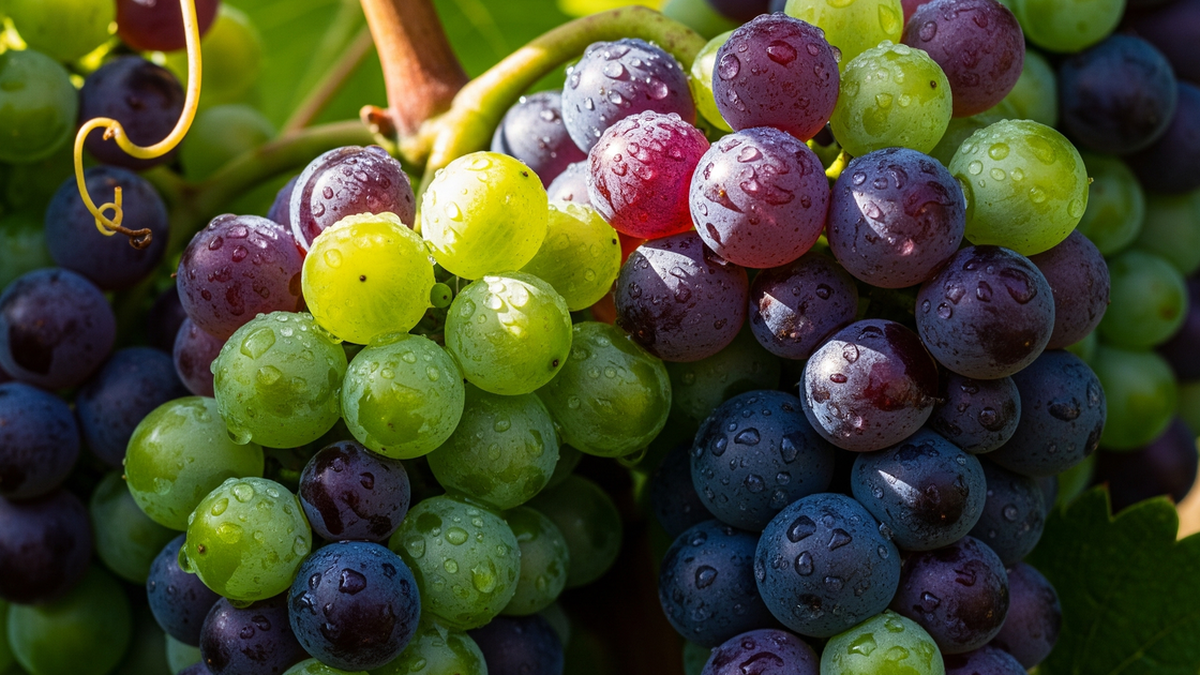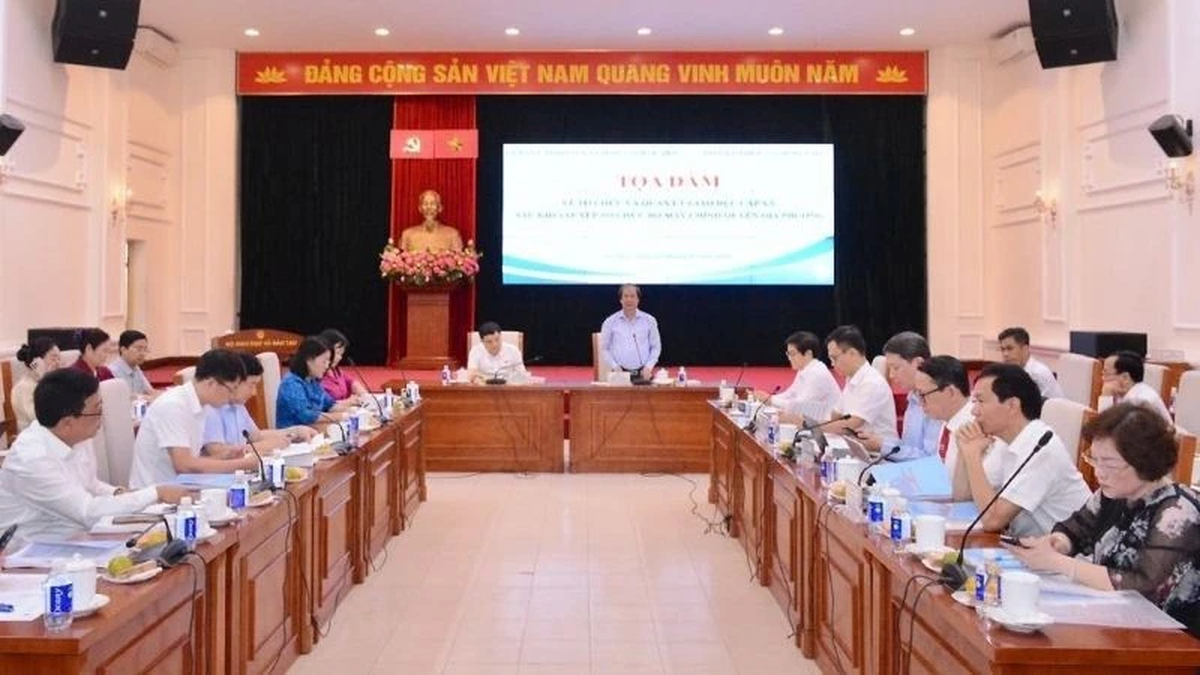Vietnam aims to become one of the world's leading agricultural countries with a modern, efficient, and environmentally friendly agricultural processing industry by 2025.

Green growth has gradually become the mainstream trend, a development model chosen by many countries.
Along with that trend, Vietnam is promoting green transformation in agriculture; including emission reduction, contributing to the implementation of Vietnam's commitments in responding to global climate change.
Resolution No. 19-NQ/TW, dated June 16, 2022, the 5th Conference of the 13th Party Central Committee on agriculture, farmers, and rural areas to 2030, with a vision to 2045, affirms the role of agriculture as a national advantage, a pillar of the economy ; in which agricultural development is associated with green, organic, and circular agriculture, associated with market demand.
The strategy for sustainable agricultural and rural development for the 2021-2030 period, with a vision to 2050, also sets the goal that by 2050, Vietnam will become one of the countries with the world's leading agriculture with a modern, efficient, and environmentally friendly agricultural processing industry.
This is an urgent issue to ensure that Vietnamese agriculture overcomes the challenge of global green transformation, maintains its position on the world food security map, and meets the requirements of import partners.
The key is to change your mindset.
Vietnam is promoting agricultural restructuring, shifting from agricultural production thinking to agricultural economic thinking, green agriculture, circular agriculture, gradually transforming production models to meet green growth and consumption.
Green agriculture aims to improve the competitiveness of agricultural products, develop technology to process and reuse by-products and waste, stabilize the economy and help farmers have a better quality of life, protect resources and agricultural ecosystems..., ensure sustainable agriculture on both socio-economic and environmental pillars, contributing to the development of a green economy.
Minister of Agriculture and Rural Development Le Minh Hoan acknowledged: “Green agriculture is an irreversible trend, we must proactively adapt and in fact people have adapted.”
For example, in Tu Ky, Hai Duong, farmers produce rice-shrimp-fish, three layers of value. Farmers earn more from selling shrimp than from selling rice, but without rice, there would be no other two products. Or the rice-shrimp, rice-fish models in Bac Lieu, Ca Mau..., Vietnamese farmers have been moving towards an ecological agriculture.
The circular agriculture model in the Central Highlands is the same. From coffee farms and fruit trees, instead of burning by-products that lead to greenhouse gas emissions, farmers recycle and chop them into bio-fertilizers for crops.

Switching to using organic fertilizers and biological pesticides is having a strong effect in many localities, with lower costs while still ensuring production efficiency.
Cooperating with enterprises in production and product consumption for more than 10 years has helped Mr. Truong Thanh Ha, Vinh Phu commune, Thoai Son district, An Giang province, to be more relaxed and secure. But in the past 3 years, Mr. Ha and his enterprise have switched to using organic fertilizers and biological pesticides, making his cooperation even more comfortable.
As one of the leading enterprises accompanying farmers in the Mekong Delta, Mr. Huynh Van Thon, Chairman of the Board of Directors of Loc Troi Group Joint Stock Company, said that with the commitment of "Sustainable development with farmers", Loc Troi cooperates with cooperatives and more than 300,000 farming households. The Group builds and guides the implementation of farming processes to optimize and mechanize production, harvesting and transportation... to help improve production efficiency and reduce costs, ensuring stable profits for farmers.
In the context of increasing input prices, the above models also help farmers reduce costs. The agricultural sector also needs to spread such models and that is the trend of circular agriculture, green agriculture, ecological agriculture in accordance with nature.
Nowadays, consumers do not simply buy a product, but they buy the entire process of creating that product with a combination of many standards such as environmental factors (high emissions, using environmentally friendly materials, harmful to the environment), labor factors...
Minister Le Minh Hoan assessed that all changes are difficult, but if there is no change, it will be even more difficult.
Playing a very important role in the agricultural value chain and also a factor helping farmers produce sustainable agriculture, however, in reality, the number of businesses investing in this area is still quite modest.
By the end of 2023, the country will have over 50,000 enterprises investing in agriculture, compared to a total of over 900,000 operating enterprises.
Mr. Ho Xuan Hung, Chairman of the Vietnam General Association of Agriculture and Rural Development, raised the question, “Is it because the mechanism and policies to encourage and support businesses to participate in the agricultural and rural sector are not strong enough, the way to mobilize, call for, and create conditions for businesses is not really good, so it is still not attractive and appealing to businesses. The connection between businesses and farmers is not really good, farmers are still passive from production to product consumption.”
One of the inputs in green agricultural production is biological pesticides, while, according to Mr. Nguyen Van Son - Chairman of the Vietnam Pesticide Production and Trading Association, the State has not had appropriate and strong enough policies to encourage research, production, trading and use of biological pesticides. Procedures are still cumbersome and complicated, and there is a lack of specific regulations on technical requirements for biological pesticides with highly specialized properties.
Vision and concrete action
Vietnam's agriculture plays a very important role, is the pillar of the economy, makes an important contribution to the country's economy, but agriculture is the industry that creates very large CO2 emissions.
At a recent National Assembly forum, delegate Nguyen Thi Lan stated that if there is no plan and specific actions for the production and export of Vietnamese agricultural products associated with reducing greenhouse gas emissions, Vietnamese agricultural products when exported will be subject to additional carbon taxes from other countries, increasing export prices and losing the competitive advantage of Vietnamese agricultural products.

Delegate Nguyen Thi Lan also suggested that the Government, ministries and sectors thoroughly study the impact of regulations of some countries on agricultural exports, thereby proposing appropriate response solutions and support for people and businesses; build scientific research programs and attractive policies to encourage people and businesses to actively participate in the carbon market for both sustainable development and increasing the value of the agricultural sector based on lessons learned from member countries of the European Union (EU) and the United States.
Agriculture is both an emission and absorption sector. Forests are the absorption sector, and emissions are from crop cultivation, livestock and aquaculture. The agricultural sector is rebuilding the emission structure of all sectors related to crop cultivation and livestock. Notably, for the first time, the forestry sector has completed the procedures to successfully transfer the amount of emission reduction, earning tens of millions of USD from selling carbon credits.
The implementation of the 1 million hectare high-quality, low-emission rice program contributes to fulfilling Vietnam's commitments in responding to global climate change, thereby meeting the requirements of import partners.
Minister of Agriculture and Rural Development Le Minh Hoan said that in order to implement the Project of 1 million hectares of high-quality rice production, low emissions, green credits, in addition to the policy of supporting cooperatives, the Bank for Agriculture and Rural Development will have separate credit packages for enterprises and cooperatives participating in the Project of 1 million hectares of high-quality rice with the criterion that the more cooperative members, the lower the interest rate. In addition, there are policies to support logistics, storage, and close links with enterprises.
From a business perspective, Mr. Nguyen Tien Huy, Director of the Office of Enterprises for Sustainable Development (Vietnam Federation of Commerce and Industry) said that agriculture is a field with many risks and large capital needs, and needs leading businesses to lead investment in agriculture.
To attract and encourage businesses to invest in businesses, there needs to be adjustments in land policies, access to and use of land for businesses. The revised Land Law has also introduced many incentive policies and regulations on agricultural land accumulation. These will help consolidate land plots, increase large-scale fields for large-scale production.
“The connection between farmers, businesses, banks, and scientists must always be promoted. When the connection between businesses increases, risks will decrease and businesses will be profitable, creating profits for businesses,” Mr. Nguyen Tien Huy shared.
Agriculture is a large carbon-emitting industry. To access green finance and meet green criteria, businesses are required to apply science and technology in genes, irrigation technology, and environmentally-adaptive cultivation. These science and technology factors will help agriculture reduce emissions and move towards green agriculture and ecological agriculture.
Regarding policies to support business development, Mr. Nguyen Van Son made some recommendations, it is necessary to learn technology research, transfer technology for biological pesticide production from countries with large, advanced and modern pesticide production, along with studying and learning policies on management, registration and business of biological pesticides of countries around the world.
To achieve the goal of increasing the proportion of biological pesticides and organic fertilizers to 30% by 2030, Mr. Huynh Tan Dat, Director of the Plant Protection Department, Ministry of Agriculture and Rural Development, said that the Ministry will have to review all mechanisms, policies, and legal systems to encourage organizations and individuals to research and apply biological and organic products. The Department also builds a process for preventing biological pesticides and using organic fertilizers to expand to farmers.
Farmers' awareness is raised, synchronously applied and gradually expanded agricultural production area using organic fertilizers and biological pesticides./.
Source


































































































Comment (0)